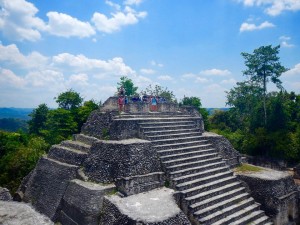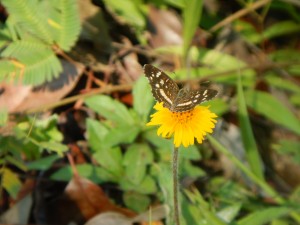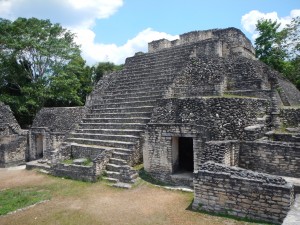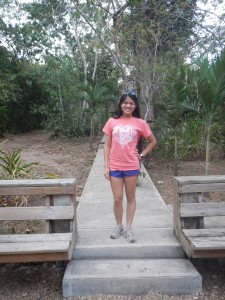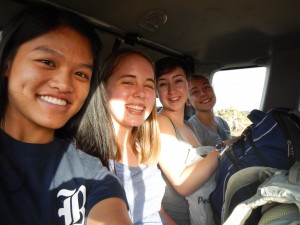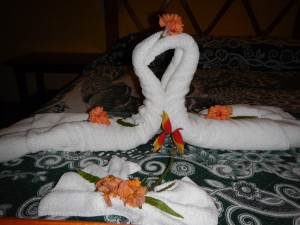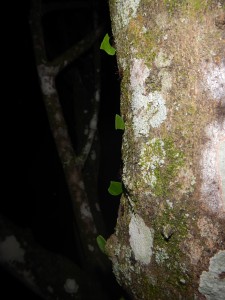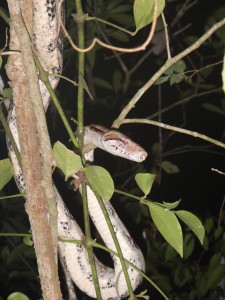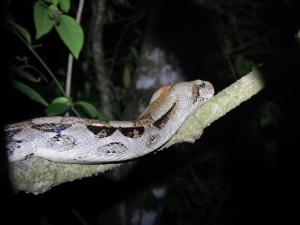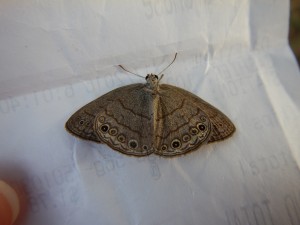Today the remoteness of the trip has begun to feel amazingly real. We’ve seen Mayan temples in the jungle and animals abound, despite the fact that we haven’t even really gone looking for them yet. Some fantastic non-mammal sightings included a blue-crowned motmot, a great black hawk, oropendola, and a slender brown scorpion (in a bathroom, unfortunately).
Today’s main activity was a visit to the Mayan ruins at Caracol. Caracol was once assumed to be a smaller city dominated by other Mayan powers such as Tikal. However, it is now known that Caracol was actually a large metropolis supporting somewhere around 150,000 people. Caracol was designed like a wagon wheel, with a main center and road “spokes” leading to the more rural agricultural areas. Most of the pyramids were used for religious rituals, as was the case with Caana, the sky palace that we climbed. After 1100 AD Caracol had collapsed, but the Maya people still live in Mesoamerica. It is amazing to me how many different kinds of people live in this part of the world. Mayans and other natives share the land with people of European or African ancestry, and further divides are made as people are sorted into nationalities (Guatemalan, Belizean, Mexican). It is perhaps no wonder that tensions between peoples at times run high.
Today also marked the first wild mammal sightings of the trip! During breakfast (6am…), we spotted a Yucatan squirrel in a nearby tree. Some other students may also have seen an agouti, though I was not able to see or identify it reliably. Later, on the road to Caracol, a coatimundi was spotted travelling on the side of the road. Although I had to jump over some seats in the van to get a glimpse of the coati, it was well worth the effort. The coati was a brown-red with characteristic white rings on its erect tail. At Caracol, some other tourists reported a Mexican black howler monkey sighting, though we did not see any signs of the primates.
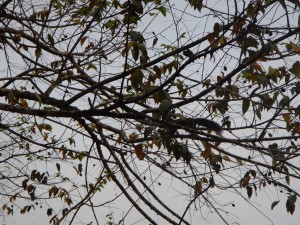
Some of the mishaps of the day included lunch drinks breaking in the cooler and a van break down. After Caracol, the plan was to visit some pools and waterfalls for a refreshing swim. However, it was not to be as our van was forced to quit due to lack of transmission fuel and oil. Luckily, we were not too far from Las Cuevas Research Station (where we will be staying until we leave for the coral reef) and we were able to improvise with some pick-up trucks. In true TFB (Tropical Field Biologist) fashion, a bunch of us piled into the bed of a truck and had a fun ride into the beautiful wilderness!


